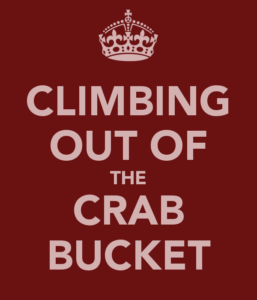Local News
Spilyay Speaks: Moving away from lateral violence
 Most people have a “crab in the bucket” story, someone starts to do well and make their way out the bucket but before long, the other crabs latch on and drag that crab down. Relatives and family have shared stories like this so much that it sometimes seems like it’s an epidemic.
Most people have a “crab in the bucket” story, someone starts to do well and make their way out the bucket but before long, the other crabs latch on and drag that crab down. Relatives and family have shared stories like this so much that it sometimes seems like it’s an epidemic.
Perhaps you were the one climbing out, perhaps you were the one latching on, either way, this story is not unusual in Native communities. We see this happening in families, within the workplace and at the community level. It is a destructive way of life that has negative consequences on our personal and communities’ growth.
This type of behavior is often referred to as lateral violence. Wikipedia describes lateral violence as “displaced violence directed against one’s peers rather than one’s true adversaries.” It is a manifestation of internal feelings such as rage, anger, fear and terror that is taken out on those around us.
Some have argued that lateral violence has its’ roots in internalized colonization, oppression and historical trauma. Modern day scientists have studied whether memory can be passed between generations through a process called ‘epigenetics’. They argue that genes are changed by specific events and passed from parent to child.
Many tribal communities have always thought this to be true – and that many of the traumas that Native communities have experienced have been passed from generation to generation. For example, the destruction of Celilo Falls had a profound negative impact on our community that still lingers today.
When individuals carry trauma and pain, they become unhealthy. In turn, some began to hurt others or turn to addictive behaviors. One of the most pervasive forms of lateral violence is gossiping but it also occurs in the form of shunning, judging, and physical, spiritual or sexual attacks. Lateral violence is also seen in behaviors that maintain a power structure whether it be in the home or in the workplace.
The reality is, lateral violence does nothing for us individually or our community. In fact, it’s scourge that we all need to work towards eliminating.
There is a wellness movement in Indian Country and here in our own backyard. Many people are doing the hard work to heal – taking a look at their own behaviors, forgiving, practicing self-acceptance and compassion, and taking personal responsibility for their behaviors. It is difficult work but the benefits are great.
Our elders tell us that our traditional and spiritual teachings are strong and good medicine for our spirits and more and more people are returning to these ways. In addition to our languages, our children have the opportunity to learn these ways at the K-8 Academy and within the longhouses. This is important because these teachings are the foundation for who we are as a people.
What would healthy behavior look like? It could be in the form of personal daily affirmations – “I am a gift from the Creator”, “I am safe,” “I am strong”. It could be paying a compliment to someone. It could be choosing not to engage in an argument or gossiping. It can start out small and it can grow. Moving towards wellness does not mean being perfect at the outset, it means choosing to take the small and sometimes difficult steps towards healing and healthiness.
We are at a critical juncture in our collective history as a Nation. For us to re-build our community, we must start at the most fundamental level of respect for ourselves and each other. There is so much good in this community and desire to do things differently. How we ignite that spark into a movement is up to us.
Spilyay Speaks is a bi-weekly column written by Alyssa Macy, a Warm Springs tribal member and communications strategist. She can be reached at alyssa.macy@wstribes.org or on Facebook, Instagram and Twitter.
